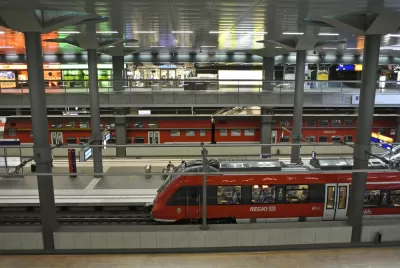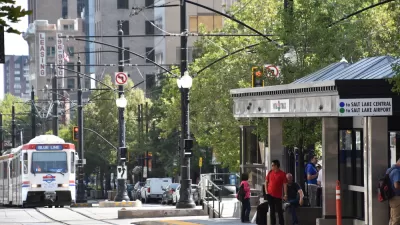Berlin is committing to a huge investment in its public transit infrastructure. Kiwi-living-in-Berlin author and lawyer Leah Hamilton writes about it.

Berlin will spend $31 billion through 2035 on its public transit system. That’s more than many countries. The biggest changes will happen very fast—by 2023—through an expansion of its urban rail network. Studies have shown Germans prefer rail over bus lines. There will be extensions to both the underground (U-bahn) and above ground (S-bahn) light rail lines. As for buses, the system will be converted to mostly electric by 2030. The investment will also ensure that public transit is fully accessible for disabled persons. The major transit authorities involved include Deutsche Bahn (DB) and Berliner Verkehrsbetriebe (BVG).
Previously, Berlin had lagged other German cities in transport infrastructure. However, with a booming economy and growing population, there has been a popular push to fund public transit improvements. Politics, always important when it comes to transit, have also aligned for transit. Notes Hamilton:
The reason behind these changes is partly due to the presence of the Green Party, SPD, and Die Linke in Berlin’s governing coalition, with all three parties in favour of making Berlin a greener, more accessible city. As part of this effort, political support is soundly behind the improvement of the public transport system as a whole.
For more details and images about what Berlin has planned, please see the source article.
FULL STORY: Berlin’s Huge Push to Improve Public Transit

Alabama: Trump Terminates Settlements for Black Communities Harmed By Raw Sewage
Trump deemed the landmark civil rights agreement “illegal DEI and environmental justice policy.”

Planetizen Federal Action Tracker
A weekly monitor of how Trump’s orders and actions are impacting planners and planning in America.

The 120 Year Old Tiny Home Villages That Sheltered San Francisco’s Earthquake Refugees
More than a century ago, San Francisco mobilized to house thousands of residents displaced by the 1906 earthquake. Could their strategy offer a model for the present?

In Both Crashes and Crime, Public Transportation is Far Safer than Driving
Contrary to popular assumptions, public transportation has far lower crash and crime rates than automobile travel. For safer communities, improve and encourage transit travel.

Report: Zoning Reforms Should Complement Nashville’s Ambitious Transit Plan
Without reform, restrictive zoning codes will limit the impact of the city’s planned transit expansion and could exclude some of the residents who depend on transit the most.

Judge Orders Release of Frozen IRA, IIJA Funding
The decision is a victory for environmental groups who charged that freezing funds for critical infrastructure and disaster response programs caused “real and irreparable harm” to communities.
Urban Design for Planners 1: Software Tools
This six-course series explores essential urban design concepts using open source software and equips planners with the tools they need to participate fully in the urban design process.
Planning for Universal Design
Learn the tools for implementing Universal Design in planning regulations.
Clanton & Associates, Inc.
Jessamine County Fiscal Court
Institute for Housing and Urban Development Studies (IHS)
City of Grandview
Harvard GSD Executive Education
Toledo-Lucas County Plan Commissions
Salt Lake City
NYU Wagner Graduate School of Public Service





























